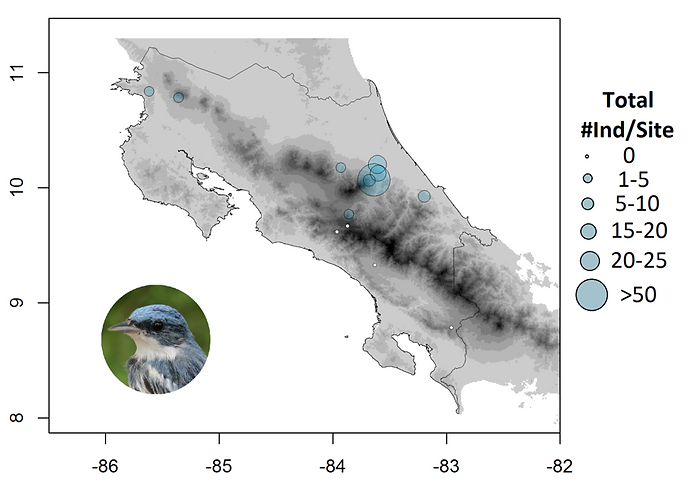
2018 Fall
Period: August 25 to September 11
Number of individuals banded: 136 | migrants + some resident species of interest.
Number of species banded: 13

This season comprised the continuation of passive surveys of Neotropical migrants at Las Brisas Nature Reserve as well as banding and resighting color marked individuals of Cerulean Warbler (Setophaga cerulea).
Total numbers of Cerulean Warblers observed at each survey site, showing large concentrations at Las Brisas Nature Reserve on the eastern slopes of Turrialba Volcano.
This provides more evidence showing the importance of this region for Cerulean Warblers.

Watson, J. (1832). Alexander Wilson [Grabado], American Ornithology Vol. IV.

Interesting data about the Cerulean Warbler:
-
Of the 13 individuals marked with color bands, 9 were seen on following days.
-
The longest stopover for one individual was 8 days.
-
During a 7 day stopover one individual was observed to use 4.1 hectares of the reserve.
Data shows Las Brisas is a viable study site for the Cerulean Warbler and it is also a site where this species is seen in large numbers.


Despite this fact, the big question has always been whether or not Cerulean Warblers were using Las Brisas as a stopover site and spending a few days after a long flight, possibly from North America, or just passing through quickly.


We now have evidence to prove Las Brisas is used as a stopover site by capture-recapture data of three individuals which increased their body mass substantially.


